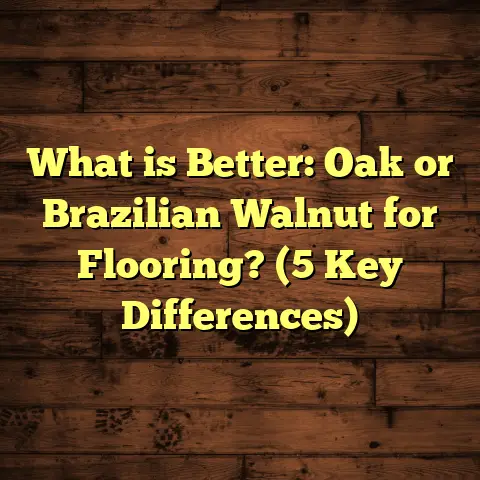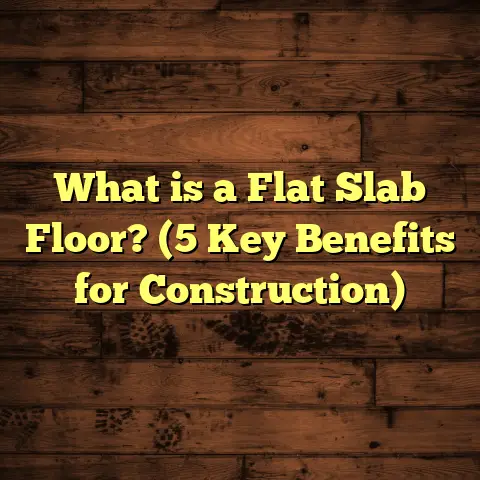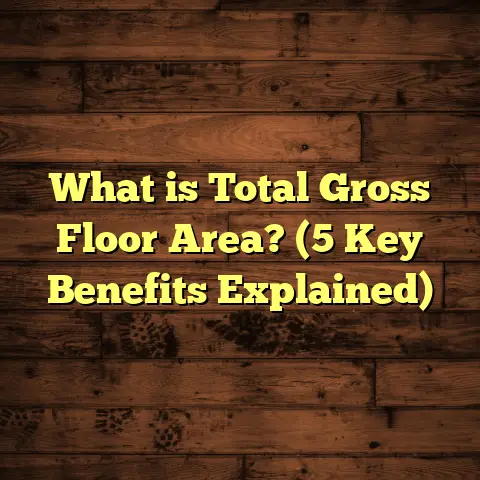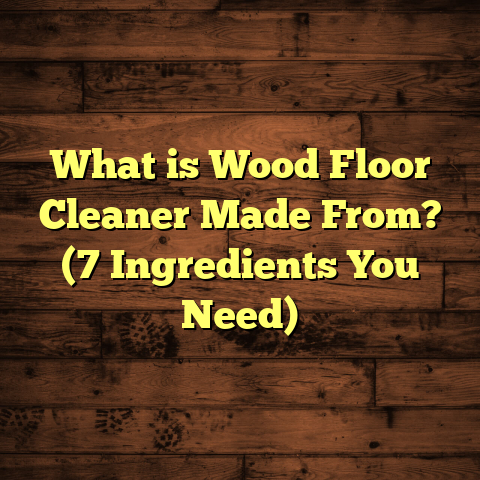What is SPC Flooring? (5 Reasons You Need to Know Today)
Regional Flooring Needs: Why Location Matters
Hey, have you ever noticed how the type of flooring people choose can vary wildly
depending on where they live? It’s something I’ve really come to appreciate after
working as a flooring contractor across different regions. The climate, lifestyle,
and even cultural preferences all play huge roles in what makes sense for a home
or business.
For instance, in the humid Southeast US, moisture and mold resistance are top
priorities for floors. Meanwhile, in the dry Southwest, durability and heat resistance
matter more. And up in the Northeast, where winters bring snow and salt, floors
need to withstand freezing temperatures and heavy wear from boots.
Understanding these regional needs has helped me recommend the right flooring
solutions for clients time and time again. One product I keep coming back to in
many of these different settings is SPC flooring. This stuff is quickly becoming a
go-to option because it ticks so many boxes—waterproof, durable, stylish, and easy
to install.
If you haven’t heard of SPC flooring or aren’t quite sure what it is, don’t sweat it.
I’m going to walk you through everything I’ve learned from years of hands-on work and
research. By the end, you’ll know exactly why SPC deserves a spot on your radar.
What Is SPC Flooring?
Alright, let’s start with the basics: what exactly is SPC flooring? The acronym SPC
stands for Stone Plastic Composite (or sometimes Stone Polymer Composite). It’s a type
of rigid core luxury vinyl flooring that has been engineered to be waterproof, strong,
and visually appealing.
Here’s how it’s made: SPC combines finely ground limestone powder (that’s the “stone”
part) with polyvinyl chloride (PVC) and stabilizers to create a dense, solid core layer.
This core is sandwiched between an attached underlayment on the bottom and a high- definition vinyl layer on top that mimics wood, stone, or other natural materials.
Because of this unique composite core, SPC flooring is much more stable than traditional
vinyl planks or laminate floors. It won’t warp or expand much when exposed to heat or
moisture. This makes it ideal for places where humidity or spills are common—think
kitchens, bathrooms, basements—even commercial settings like cafes or retail stores.
I first came across SPC flooring about six years ago during a renovation project in Florida.
The client was fed up with their hardwood floors warping due to humidity and wanted something
that looked good but could handle moisture without issues. We installed SPC flooring throughout
the main living areas and kitchen. The difference was immediate. Not only did the floor hold up
perfectly through Florida’s sticky summers, but my client loved how closely it resembled real wood.
Breaking Down SPC Flooring Components
To give you a clearer picture of what makes SPC flooring special, here’s how its layers stack up:
- Wear Layer: This is the topmost transparent coating. It protects against scratches, stains, and scuffs. Thickness varies from 0.3mm to 0.7mm depending on quality.
- Vinyl Decorative Layer: Printed with high-resolution images that replicate wood grain, stone textures, or other patterns. This layer provides the flooring’s look.
- SPC Core Layer: The star of the show! Made from limestone powder mixed with PVC and stabilizers, this rigid core gives SPC its strength and waterproof qualities.
- Attached Underlayment: A thin foam or cork layer attached underneath for sound absorption and added comfort underfoot.
The combination of these layers results in a floor that looks natural but performs like a champ in tough conditions.
Why Is SPC Flooring Gaining Popularity?
You might be wondering why more people are choosing SPC over other options like hardwood, laminate, or traditional vinyl. Well, based on my experience and industry trends, here are some key reasons:
- Waterproofing: Unlike hardwood or laminate that absorb moisture and swell, SPC floors repel water completely.
- Durability: The rigid core resists dents and heavy foot traffic better than many vinyl options.
- Installation Ease: Click-lock systems make installation fast and clean—no glue or nails needed.
- Cost-Effectiveness: Offers many benefits of hardwood at a fraction of the price.
- Design Variety: Realistic textures and colors suit almost any style preference.
I’ve seen these factors influence homeowner decisions over and over again during consultations.
5 Reasons You Need to Know About SPC Flooring Today
Let me break down five solid reasons why SPC flooring might just be what your home or project needs right now.
1. It’s 100% Waterproof — No More Worries About Spills or Moisture
Living in areas prone to humidity or with active kids and pets means floors get wet—often unexpectedly. I’ve lost count of how many times I’ve had clients stress about water damage from accidental spills or pet accidents.
SPC flooring is completely waterproof thanks to its stone plastic composite core. It doesn’t absorb water like wood or laminate does. So you won’t see warping, swelling, or mold growth underfoot.
A study by HomeAdvisor reported that water damage accounts for nearly 40% of all flooring repairs in U.S. households annually. Choosing SPC flooring can drastically reduce that risk.
One memorable client had two rambunctious toddlers constantly spilling drinks in the kitchen. After switching to SPC flooring, she told me she felt “so much relief” knowing she didn’t have to worry about ruined floors anymore.
2. Durability That Stands Up to High Traffic and Everyday Life
If you’ve ever scratched your hardwood floor moving furniture or noticed wear patterns in your laminate after a couple of years, durability might be a top concern for you as well.
SPC flooring’s composite core creates a denser surface than typical vinyl planks or laminate boards. It resists dents from heavy furniture legs and won’t scratch easily even in busy households.
According to a report by the Flooring Industry Association, SPC floors have an average lifespan of 20-25 years when properly maintained—significantly longer than laminate which lasts about 10-15 years on average under similar conditions.
In one commercial project I worked on—a popular coffee shop downtown—the owners were amazed at how well their SPC floors held up under hundreds of daily customers and constant cleaning routines without showing wear after 3 years.
3. Fast and Simple Installation Saves Time and Money
When I’m managing a big flooring project with tight deadlines, installation speed matters a lot. With traditional hardwood or tile, prep work and installation can drag on for days or weeks.
SPC planks use a click-lock system that snaps together easily without adhesives or nails. This means less mess on site and faster completion times.
In one recent residential remodel I handled, we installed over 1,500 square feet of SPC flooring in just three days—a job that would have taken at least twice as long with wood planks.
Also noteworthy: SPC can be installed over many existing subfloors including concrete slabs and vinyl without extensive prep work—saving labor costs too.
4. Realistic Looks That Mimic Wood and Stone Beautifully
One common misconception people have about vinyl-based floors is that they look cheap or plastic-y. But SPC has changed the game here by incorporating ultra-high definition textures that closely replicate natural materials.
Manufacturers use techniques like embossing in register (EIR) to create grains and knots you can see and feel underfoot. This attention to detail makes it tough to tell SPC apart from hardwood or natural stone unless you get really close.
I had a client who loved rustic hardwood aesthetics but was nervous about upkeep with kids around. We chose a hand-scraped oak design in SPC flooring that gave her exactly the look she wanted without worrying about scratches or moisture damage.
5. Growing Eco-Friendly Options Help Reduce Environmental Impact
Sustainability is becoming increasingly important in construction choices today—and flooring is no exception.
Some brands now offer SPC products made with recycled limestone powder and PVC content plus low VOC finishes certified by FloorScore®—which means better indoor air quality for your home.
While vinyl production isn’t perfect environmentally speaking, these new developments show progress toward greener options. Plus, longevity means less frequent replacement cycles compared to cheaper floors that wear out quickly.
I spoke with a manufacturer recently who shared data showing their eco-friendly SPC line uses 30% less virgin material than previous versions—a promising trend I expect will continue.
Deep Dive: How Does SPC Compare With Other Floor Types?
Let me share some comparisons based on my experience and research that might help you figure out where SPC fits best among popular flooring choices:
| Flooring Type | Water Resistance | Durability | Installation | Cost per Sq Ft | Aesthetic Appeal |
|---|---|---|---|---|---|
| Hardwood | Low (not waterproof) | High | Moderate (nails/glue) | $8 – $15 | Natural wood grain |
| Laminate | Moderate | Moderate | Easy (click-lock) | $2 – $6 | Good wood look |
| Traditional Vinyl | High | Moderate | Easy (glue/click) | $2 – $5 | Wide range |
| SPC Flooring | 100% Waterproof | Very High | Easy (click-lock) | $3 – $7 | High-definition wood/stone looks |
For example, hardwood looks amazing but needs extra care around moisture and can scratch more easily—making it less ideal for kitchens or basements unless you’re prepared for maintenance headaches.
Laminate offers decent durability and looks but tends to swell if wet for too long. Traditional vinyl is waterproof but often lacks rigidity and feels softer underfoot compared to SPC.
SPC hits a sweet spot between all these factors—making it an excellent choice if you want water resistance plus durability without sacrificing style or installation ease.
Case Study: Residential Basement Renovation in Midwest Region
Here’s a project example from my own work that highlights why SPC was the best choice:
The homeowners wanted to finish their damp basement into a cozy family room with durable flooring that could handle occasional water seepage during heavy rains.
We faced challenges:
- Concrete slab subfloor prone to moisture
- Need for waterproof material
- Budget constraints limiting expensive tile options
After discussing options (tile vs laminate vs SPC), we settled on mid-grade SPC planks with an attached foam underlayment for added warmth.
The results?
- Installation completed in just two days
- Zero moisture issues after six months of rainy weather
- Family loved the warm wood look without cold tile feel
- Floor remains scratch-free despite kids playing with toys on it daily
They told me later it was one of their best home improvement decisions because “it looks great but feels practical.”
Tips for Maintaining Your SPC Floor
Even though SPC floors are tough, they still need some care to stay looking fresh:
- Sweep or vacuum regularly to remove grit that can cause abrasion.
- Clean spills promptly using a damp mop or cloth—avoid harsh chemicals.
- Use felt pads under furniture legs to prevent surface scratches.
- Avoid dragging heavy furniture across the floor.
- Don’t use steam cleaners as excessive heat can damage wear layers.
- For stubborn stains, use manufacturer-recommended cleaners designed for vinyl floors.
Following these simple steps can extend your floor’s life well past two decades according to industry data.
Common Questions About SPC Flooring
I often get asked these questions during consultations:
Q: Can I install SPC flooring myself?
A: Absolutely! Many DIYers find the click-lock system intuitive and manageable with basic tools. Just follow manufacturer instructions carefully.
Q: How does SPC feel underfoot?
A: It’s firmer than traditional vinyl but still has some give thanks to the attached underlayment layer which adds comfort and noise reduction.
Q: Is it noisy when walking?
A: Not really if installed properly over an underlayment; it often sounds quieter than laminate or hardwood on concrete slabs.
Q: Can I install SPC over radiant heating?
A: Yes! Most brands are compatible with radiant floor heating systems but always confirm specifics before buying.
My Final Thoughts on SPC Flooring
After installing hundreds of floors over my career—from hardwoods to tile—I can say SPC flooring holds its own as one of the most versatile options available today. It solves common problems like moisture sensitivity and wear while offering great looks at reasonable prices.
If you want something durable enough for busy homes but stylish enough for living rooms, SPC deserves serious consideration.
Feel free to reach out if you want personalized advice based on your home’s location, lifestyle, or budget—I’m happy to share what works best from my experience!
Hope this gives you all the info you need to decide whether SPC flooring fits your next project perfectly!





